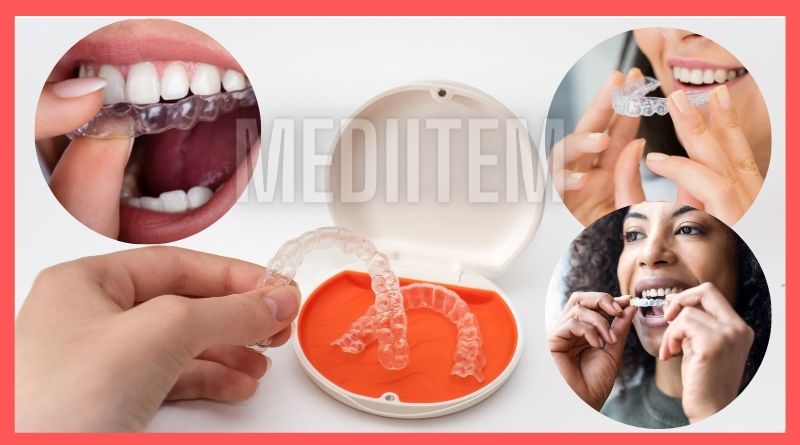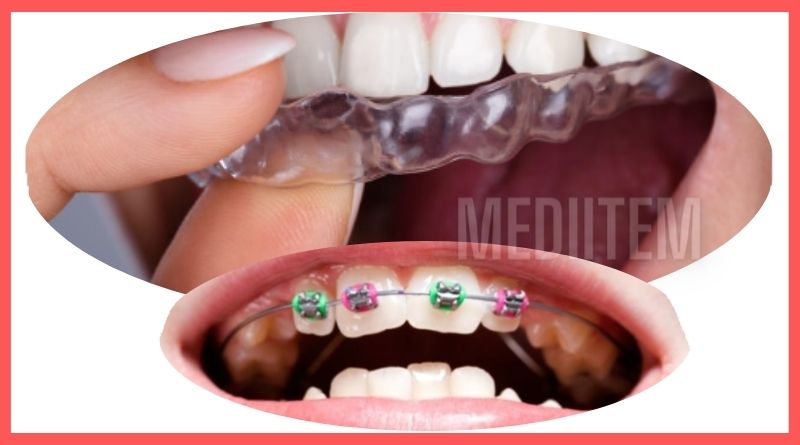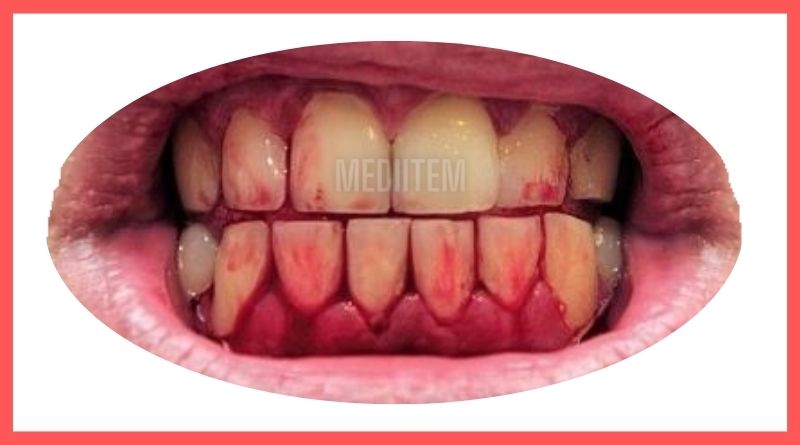Aesthetic braces are an option for many people who want discreet orthodontics with an appearance that does not contradict aesthetics. Braces consist of a non-invasive orthodontic therapy, which consists of adequately and gradually rectifying the position of the teeth.
The poor position of the teeth can cause problems not only of an aesthetic nature but also of health. For example, mounted teeth make good dental cleaning extremely difficult, and, on the contrary, they make the accumulation of bacterial plaque much easier, and therefore, dental and periodontal diseases. In addition, the poor position of the teeth and jaw bones causes additional tension when we are chewing food, which can translate into jaw, head, neck, and shoulder pain. To solve one aspect and combat and prevent the others, that is why braces therapy exists.
But the great demand for braces has precisely caused them to diversify in search of customer preferences, and greater comfort and efficiency of the treatment. Hence, their shapes and sizes vary considerably on the market.
What is aesthetic orthodontics?
Orthodontics is one of the branches of dentistry that prevents and corrects alterations in the shape and position of the teeth and jaws. Its main objective is to restore both functionality and oral and facial aesthetics. Thus, in the same way as in traditional Orthodontic treatments with metal braces, aesthetic Orthodontics seeks to solve dental malpositions, as well as occlusion disorders.
Unlike conventional braces, aesthetic braces are made from specific materials that make them practically imperceptible. Thanks to the latest dental advances, this type of procedure allows you to recover the functionality of the oral cavity without neglecting the patient’s facial aesthetics.
Types of aesthetic braces
*Ceramic or porcelain aesthetic braces
Transparent ceramic braces are a highly requested option for adults who want to avoid metal braces since they are much more aesthetic. Ceramic braces are made up of tooth-colored brackets that are used to properly align your teeth.
The wires used in transparent ceramic brackets are made with a very resistant composite material and small ceramic pieces are placed on it that are glued to each tooth.
*Sapphire aesthetic braces
Sapphire braces are the aesthetic orthodontic option with braces that offer the highest quality. Sapphire braces blend perfectly with the color of the teeth so they are not noticeable. One of their great advantages over ceramic braces is that sapphire braces do not get dirty easily or stained by smoking or drinking coffee or coloring drinks. In addition, sapphire brackets are more respectful and cause fewer scratches, making them more comfortable when performing orthodontic treatment.
Sapphire is a semi-precious stone and the use of it to make brackets represents the latest technology that has been applied to materials. Visually they are transparent. As an advantage, they do not lose this transparency or change their color throughout the orthodontic treatment.
Being transparent, they do not stand out on the tooth and are aesthetically concealed perfectly. Although this type of material is the most expensive, it is also the most in-demand among adult patients.
*Polysulfone Brackets
Polysulfone is a compound from plastic. It is a very transparent material and provides good performance in braces treatment since the friction of the brackets with the archwires is reduced and achieves a high-quality aesthetic result.
*Zirconium Braces
Zirconium is one of the best materials in terms of quality and resistance, which is why it offers a high-quality solution with an aesthetic appearance similar to that achieved with porcelain, which is why it blends perfectly with the tooth with an almost bracket. imperceptible to the naked eye.
*Lingual braces
Lingual braces offer the most aesthetic solution since they are invisible brackets as they are glued to the inside of the tooth, so they are simply brackets that cannot be seen from the outside.
Advantages and disadvantages of aesthetic braces
*Aesthetic braces offer the same results as conventional orthodontic treatment with metal braces but with the advantage of being a much more aesthetic option.
*The duration of treatment with aesthetic braces is the same as with conventional treatments.
*Aesthetic braces allow us to correct our teeth with a transparent device that will help us improve our image during the process.
*The materials of the aesthetic braces are manufactured with the highest quality with anti-allergic and completely reliable materials, so if we are allergic to metal it will offer us a perfect alternative.
*Due to innovation, the price of aesthetic braces has been reduced considerably, making them more affordable.
*Aesthetic braces, unlike metal braces, are the perfect solution for both adolescents and adults.
Nowadays, the advantages of aesthetic braces are many since they offer us transparent materials that make the device go unnoticed during the patient’s treatment, achieving the same results as conventional braces. The only small disadvantage of aesthetic braces is that the price of aesthetic braces is slightly higher due to the quality of the materials.
Differences between aesthetic braces and metal ones
Traditional braces are made of metal compounds welded or adhered directly to the tooth with a type of special orthodontic glue and act as support for the arches to apply tension and correctly align the teeth. If we talk about aesthetic braces we see that they fulfill the same function with the same result. Instead of using metallic materials, new materials are used that offer more aesthetic results, such as porcelain, sapphire, or zirconium, among others.
The only real difference in both treatments is the price, which is slightly higher in the case of aesthetic braces because the latest generation materials are used, but concerning all technical aspects they meet the same characteristics as traditional braces.
The biggest difference and advantage of aesthetic braces is that they are transparent and therefore more discreet and do not affect our smile as much during treatment, which is why they are perfect for cases where we want to avoid a metallic appearance in our smile and align our teeth.
Read more: Different types of brackets teeth braces for orthodontic
The 10 most common dental treatments in aesthetic braces
Patients increasingly demand better aesthetic braces treatments to achieve a perfect smile and correct any defects they may have in their teeth. The objective is to use all the techniques available in dentistry and adapt them to the needs of each patient to design a smile with which they identify and can look proud and without any complexes.
These are the ten treatments that patients demand the most and that are the most effective in improving dental aesthetics:
*Dental implants: when there has been trauma and it is necessary to replace the teeth, the implant is the best option both aesthetically and functionally. It is essential to have top-level materials and brands so that osseointegration is good and the screws are well fixed in the bone. Afterward, the crowns will perfectly imitate the original teeth.
*Gummy smiles: using a laser you can reduce the amount of gum we show when smiling and design a perfect smile.
*Smile transformation: the specialist develops a personalized treatment plan for each patient based on their needs and desires. It is about making a comprehensive evaluation of each case and carrying out different quality and effective aesthetic treatments.
*Porcelain veneers: it is an immediate treatment with surprising effects to correct defects in the smile while maintaining the original teeth. Due to technological innovation in this field and the variety of veneers, we can say that it is an aesthetic treatment with many possibilities and excellent results.
*Dental bridges: it is a good option to recover the functionality of the teeth for those patients who cannot receive dental implants for different reasons.
*Crowns: it is a very effective treatment for patients with broken, chipped, deformed teeth or large cavities.
*Dental adhesion: composite is the material used to sculpt and contour damaged teeth or those that, for aesthetic reasons, need a change in shape. Technology has managed to imitate the characteristics of enamel perfectly.
*Inlays/onlays: These are small inlays custom-made to fit the oral cavities.
*Teeth whitening: to achieve a bright and shiny smile, this treatment can achieve incredible effects with different techniques depending on each patient’s case. With just one visit to the clinic, the results are already seen and the patient can continue the treatment at home.
*Invisalign invisible orthodontics: Invisalign has achieved a very effective invisible orthodontic treatment thanks to transparent plastic aligners that go unnoticed and achieve excellent results.
Aesthetic self-ligating braces and metal braces
The, let’s say, most traditional form of this treatment is metal aligners, which have a series of pros and cons that we need to know in detail to know how to make a decision. The pros would be the following:
*For now, metal aligners are the least expensive of all those currently on the market. Likewise, and in parallel, its effectiveness is comparable, if not greater, to that of other aligners on the market.
*Its composition is quite versatile, which makes its pieces much easier to replace if they break, fall, or are damaged in some way.
However, they also have a series of disadvantages compared to, for example, aesthetic braces:
*The metal ends of the brackets can cause damage to the patient’s gums and cheeks, especially when one of them or the wires becomes disengaged.
*They are the most visible aligners on the market, and therefore, for many people, the least aesthetically flattering.
On the contrary, aesthetic self-ligating braces have multiple advantages that are useful to know:
*The sapphire material is much less noticeable to the eye, which is why it is preferred by most patients. Middle-aged or mature-aged people who are looking for aesthetic improvements in their teeth rather than solving oral health problems are increasingly coming to dental clinics in search of this treatment.
*The pieces of this self-ligating aesthetic orthodontic adhere to the teeth with a particular softness that does not cause any discomfort. The cheeks and gums are therefore free of discomfort and wounds. These can also occur because we have housed a foreign element in our oral cavity for a long time. However, compared to traditional metal braces, wounds proliferate much less.
*Furthermore, the fact that it is a translucent-looking orthodontic correction also offers a greater sensation of cleanliness and hygiene.
To be honest, it is also true that these sapphire aesthetic aligners come with some disadvantages, although they are less noticeable or bothersome than those of traditional correctors:
*They are somewhat more expensive than other aligners since sapphire is a somewhat higher-cost material than metal.
*They have to be cared for more meticulously than traditional correctors and require somewhat more thorough dental hygiene since signs of dirt are somewhat more visible.
In general, aesthetic braces are much more requested than metal braces and are considered more advantageous by many patients, and more and more of them are opting for this attractive alternative to traditional orthodontics.
Comparison of metal and aesthetic braces
Metal brackets
Advantages:
*Durability: They are extremely resistant and rarely break.
*Cost: They are generally cheaper than aesthetic braces.
*Effectiveness: Suitable for complex treatments.
Disadvantages:
*Aesthetics: They are more visible than aesthetic braces.
*Comfort: They can cause more irritation to the gums and cheeks.
Aesthetic braces
Advantages:
*Aesthetics: They are less noticeable, which makes them preferred by adults and adolescents.
*Comfort: They tend to be softer and less irritating to the gums.
Disadvantages:
*Cost: They are usually more expensive than metal ones.
*Care: They require more attention to oral hygiene, as they can stain.
Types of aesthetic braces and their characteristics
There are several types on the market, each with its characteristics and differences. The most common are:
*Ceramic Brackets: These braces are made of ceramic or porcelain, which gives them a tooth-like appearance. They are highly aesthetic and blend easily with the natural color of the teeth, making them less visible. Additionally, they are stain-resistant and do not dye easily.
*Sapphire Brackets: Made from clear sapphire crystal, these braces are virtually invisible. They are highly resistant to stains and maintain their transparency throughout the treatment. In addition, they are very comfortable and do not irritate oral tissues.
*Clear Plastic Braces: These braces are made from a clear plastic material and are an even more discreet option. They are comfortable to wear and are barely noticeable in the mouth. However, they may be less durable than other types and require special care to prevent staining.
Advantages of aesthetic braces
They offer several advantages over other orthodontic alternatives, especially for those looking for a discreet and aesthetically pleasing option:
*Improved aesthetics: The main advantage is its discreet and aesthetic appearance. Their ability to blend with the natural color of teeth makes them virtually invisible, allowing patients to smile with confidence throughout their orthodontic treatment.
*Comfort: Although aesthetics are important, they are also comfortable to wear. They are designed to minimize irritation to oral tissues and provide a more pleasant treatment experience.
*Stain resistance: Especially those made of ceramic and sapphire, they are highly resistant to stains. This means they will maintain their clear or tooth-colored appearance throughout the treatment, no matter what is consumed.
In summary, aesthetic braces represent a revolution in the field of orthodontics by offering a discreet and aesthetically pleasing option to correct dental malocclusion. With a variety of types available, patients can find the option that best suits their needs and preferences. Their ability to improve aesthetics, comfort, and stain resistance makes them a popular choice among those seeking a perfect smile without compromising their appearance during treatment.
Conclusion for aesthetic braces
Aesthetic orthodontics is identical to traditional orthodontics but with rings and brackets made of different materials that, unlike metal ones, are very little visible and are highly discreet, so they do not generate the visual problem typical of conventional orthodontics. It should be noted that invisible and transparent orthodontic techniques, although they offer an aesthetic result much superior to these other types of devices, cannot be considered aesthetic orthodontics.
Aesthetic devices are a little more expensive than metal ones, depending on the materials chosen, but they are equally effective and are highly recommended for adolescents, young people and adults in whom concern for image is an important factor when it comes to deciding to follow this type of treatment.
In this case, the arches are made of metal, and different alloys (steel, nickel, titanium) can be used, as well as different thicknesses and types of sections. They are also covered in a white material so that they are not as visible as if they had the appearance of metal. In addition, they have the advantage that the possibility of developing an allergic reaction to metals, especially alloys containing nickel, is significantly reduced.
On the other hand, in aesthetic orthodontics, different types of materials can be used to manufacture brackets, each of them with their characteristics:
Polysulfone: is a plastic compound that reduces the friction of the orthodontic appliance with the tooth surface and therefore the wear and tear that the enamel can suffer.
Ceramic: they have the same color as the tooth and are very resistant.
Zirconium: they are harder and more resistant than the previous ones and aesthetically similar.
Sapphire: It is characterized by being completely transparent and having great hardness, in addition to not discoloring or dyeing with food pigments, as happens in other types. For this reason, orthodontics made with this material are considered the most aesthetic.
Please subscribe to my channel and follow


